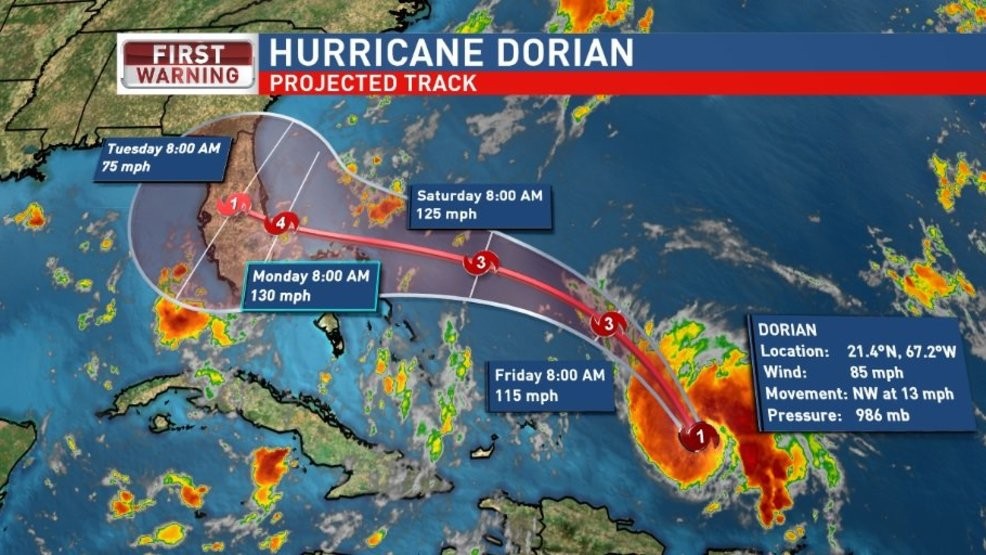Surviving even a tropical storm is tough enough, but some Floridians experience increased rat problems during hurricane season. There are several factors in play including the simple fact that wet rodents will look for a safe, dry haven.
Rain will flood lower lying areas where rats hide and nest. Strong winds will also damage natural nesting areas of rodents, forcing them to seek higher ground. Unfortunately, higher dry ground safe from the wind will be inside your home and up in your attic.
Then there is the aftermath of a storm when there are piles of debris, fallen branches, and leaves. These along with damaged household goods, cut tree trunks and limbs, and other storm debris that are left piled on the property or become lodged in ditches or along streams quickly attract and provide shelter for rats. Further, loosened soil around holes around the roots of fallen trees become ideal burrowing sites.
It is important to inspect for any damage to your home’s exterior. New gaps or tears in siding, soffits, or other details can provide rats with easier access to sheltered areas, such as your crawlspace, basement, attic or even wall voids.
Sadly, though rare, we’ve seen discarded food and drink items left by street and lawn cleaning crews which quickly attract rats.
Watch for Signs of Rat Problems
- The most common rats, Norway rats like to nest in underground burrows. However, during hurricane season they will move to higher ground and may nest indoors. Roof rats, also common, typically nest above ground including in trees and house mice will nest almost anywhere.
- Mice and rats can chew through many materials including siding, sheetrock, cardboard boxes, etc., to gain entry to an area. Look for signs of chewing and tears.
- A rat’s indoor nest or feeding areas will show signs of scat or fecal droppings.
What to Do
- Clear debris that provides protective cover for rodents around houses and buildings.
- If you must pile debris or trash for later removal, place the piles as far away from your home as possible.
- As soon as you can when its dry enough, trim back lawns and overgrown vegetation near your home to eliminate the protective cover and attraction they present.
- Remove or contain potential food sources such as household trash, spoiled or discarded food, bird feed, or anything else that might attract mice and rats.
- Do not leave bowls of pet food outdoors overnight. They attract rats and other animals that can pose other problems, such as raccoons, skunks, and opossums.
- Depending on their age and size, rats can fit through openings as small as a quarter and mice may fit through dime-sized openings. Seal gaps around water pipes, utility line entry points, vents, crawlspace accesses and doors. Rodents can chew easily through foam and dried caulk to gain entry. Use sheet metal or 1/4-inch mesh galvanized hardware cloth to close large openings.
Getting Rid of Pests Any Time
Snap traps and glue boards can be used to catch rats and mice indoors but may be difficult to place in key areas when repairs are underway. Bait the trigger mechanism with a food item such as corn (or another grain), peanut butter, or oatmeal. Never place traps in areas where children and pets may be able to reach them. Check traps daily and dispose of carcasses quickly and appropriately to avoid problems with flies. Always wear gloves (preferably ones that are disposable or can be rinsed in detergent or bleach) whenever you handle traps and/or dead rodents. If you don’t want to reuse the trap, you can pick it up with a plastic trash bag or plastic grocery bag, seal the bag, and dispose of it properly.
Rodent baits are usually effective for mouse and rat control although the disruptions that occur during and after storms, as well as during subsequent clean-up activities, also disrupt normal rodent behavior. They may be less likely to visit bait locations. Carelessly discarded trash (or flood-displaced garbage) may also provide a ready food source that distracts the rodents from finding/eating the bait. It may also be difficult to place and inspect/maintain bait stations properly.
Baits must be used with great care which is why many homeowners rely on a professional pest control professional. We are happy to help you to take care of the rat problems. If you choose to take care of things yourself, be sure to use bait only in tamper-resistant bait stations and never place them where children, pets, or wildlife can get to them. Do not use “place packs” or other types of rodent bait where they can easily be removed and/relocated by rodents because they may drop the bait where it may be found and accidentally eaten by children (who confuse it with candy) or by pets or wildlife. Poisoned rodents may also die in open or accessible areas where wildlife (or free-roaming pets) may eat them and become ill. Do not use baits indoors because the rat or mouse may die under the house, inside a wall, or in another inaccessible area that prevents you from removing the carcass (and subsequent odor).
Need help? Call us at Heath Pest Control and we will be happy to help you out with rat problems before and after storms. You can also request a visit at this link.

